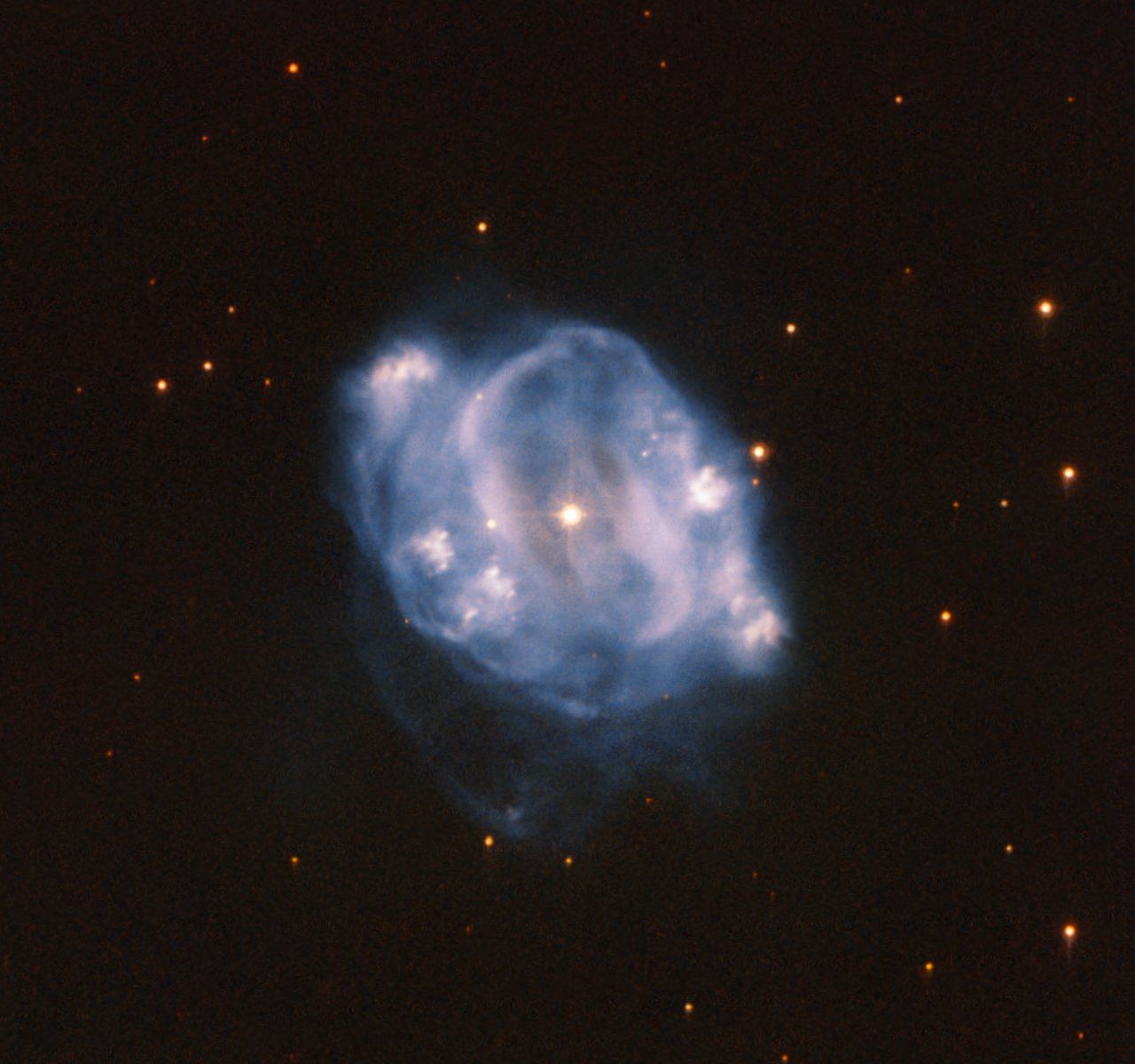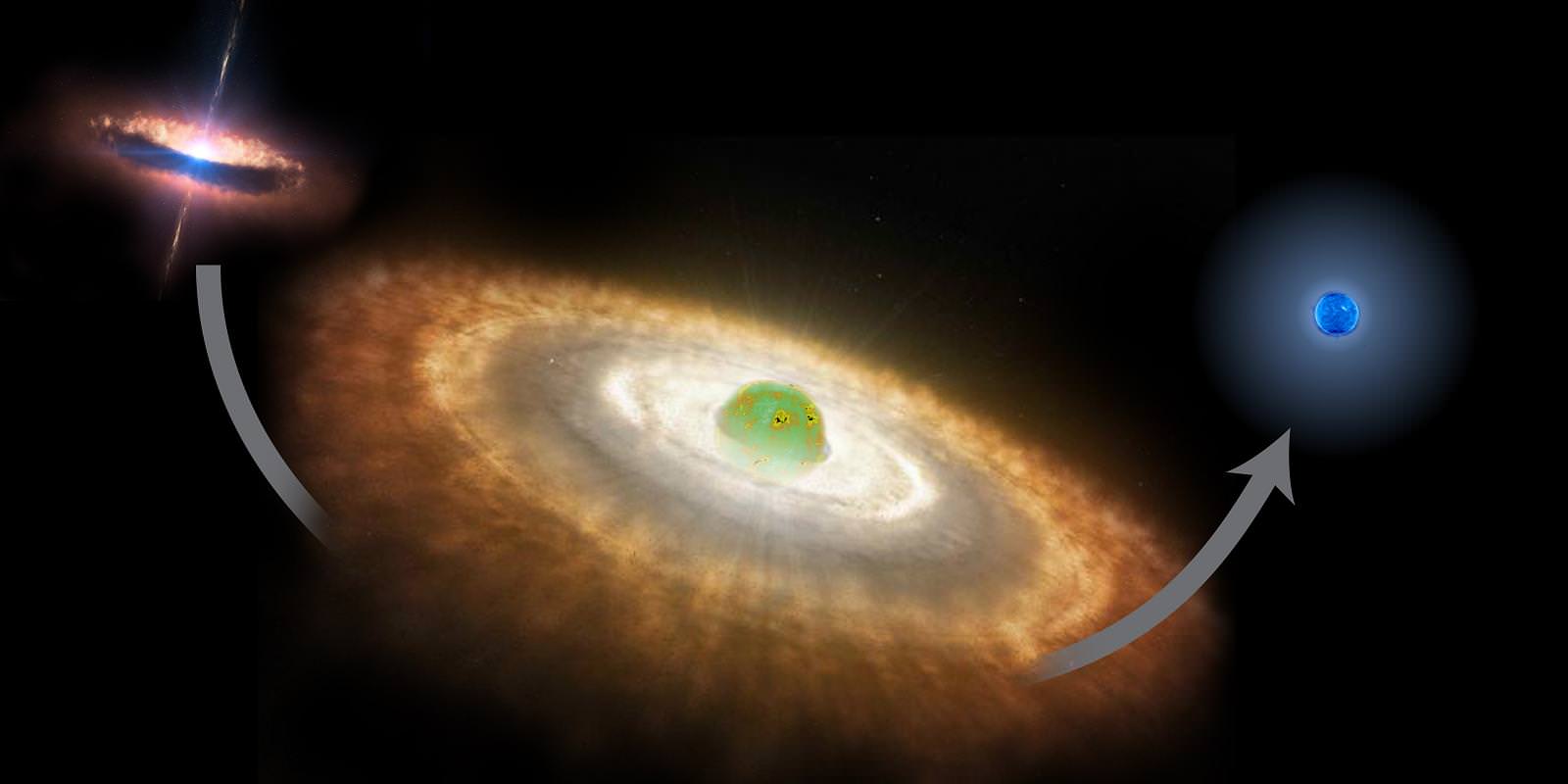Binary star systems are everywhere. They make up a huge percentage of all known solar systems: from what we can tell, about half of all Sun-like stars have a binary partner. But we haven’t really had a chance to study them in detail yet. That’s about to change. Using data from the European Space Agency’s Gaia spacecraft, a research team has just compiled a gigantic new catalog of nearby binary star systems, and it shows that at least 1.3 million of them exist within 3000 light-years of Earth.
Continue reading “Our Part of the Galaxy is Packed with Binary Stars”This Star Has Reached the End of its Life

About 10,000 light years away, in the constellation Centaurus, is a planetary nebula called NGC 5307. A planetary nebula is the remnant of a star like our Sun, when it has reached what can be described as the end of its life. This Hubble image of NGC 5307 not only makes you wonder about the star’s past, it makes you ponder the future of our very own Sun.
Continue reading “This Star Has Reached the End of its Life”The Sun
The Sun is the center of the Solar System and the source of all life and energy here on Earth. It accounts for more than 99.86% of the mass of the Solar System and it’s gravity dominates all the planets and objects that orbit it. Since the beginning of history, human beings have understood the Sun’s importance to our world, it’s seasons, the diurnal cycle, and the life-cycle of plants.
Because of this, the Sun has been at the center of many ancient culture’s mythologies and systems of worship. From the Aztecs, Mayans and Incas to the ancient Sumerians, Egyptians, Greeks, Romans and Druids, the Sun was a central deity because it was seen as the bringer of all light and life. In time, our understanding of the Sun has changed and become increasingly empirical. But that has done nothing to diminish it’s significance.
Continue reading “The Sun”
Massive Stars Start Life Big… Really BIG!

[/caption]
It might be hard to believe, but massive stars are larger in their infant stage than they are when fully formed. Thanks to a team of astronomers at the University of Amsterdam, observations have shown that during the initial stages of creation, super-massive stars are super-sized. This research now confirms the theory that massive stars contract until they reach the age of equilibrium.
In the past, one of the difficulties in proving this theory has been the near impossibility of getting a clear spectrum of a massive star during formation due to obscuring dust and gases. Now, using the powerful spectrograph X-shooter on ESO’s Very Large Telescope in Chile, researchers have been able to obtain data on a young star cataloged as B275 in the “Omega Nebula” (M17). Built by an international team, the X-shooter has a special wavelength coverage: from 300 nm (UV) to 2500 nm (infrared) and is the most powerful tool of its kind. Its “one shot” image has now provided us with the first solid spectral evidence of a star on its way to main sequence. Seven times more massive than the Sun, B275 has shown itself to be three times the size of a normal main-sequence star. These results help to confirm present modeling.
When young, massive stars begin to coalesce, they are shrouded in a rotating gas disk where the mass-accretion process starts. In this state, strong jets are also produced in a very complicated mechanism which isn’t well understood. These actions were reported earlier by the same research group. When accretion is complete, the disk evaporates and the stellar surface then becomes visible. As of now, B275 is displaying these traits and its core temperature has reached the point where hydrogen fusion has commenced. Now the star will continue to contract until the energy production at its center matches the radiation at the surface and equilibrium is achieved. To make the situation even more curious, the X-shooter spectrum has shown B275 to have a measurably lower surface temperature for a star of its type – a very luminous one. This wide margin of difference can be equated to its large radius – and that’s what the results show. The intense spectral lines associated with B275 are consistent with a giant star.
Lead author Bram Ochsendorf, was the man to analyze the spectrum of this curious star as part of his Master’s research program at the University of Amsterdam. He has also began his PhD project in Leiden. Says Ochsendorf, “The large wavelength coverage of X shooter provides the opportunity to determine many stellar properties at once, like the surface temperature, size, and the presence of a disk.”
The spectrum of B275 was obtained during the X-shooter science verification process by co-authors Rolf Chini and Vera Hoffmeister from the Ruhr-Universitaet in Bochum, Germany. “This is a beautiful confirmation of new theoretical models describing the formation process of massive stars, obtained thanks to the extreme sensitivity of X-shooter”, remarks Ochsendorf’s supervisor Prof. Lex Kaper.
Original Story Source: First firm spectral classification of an early-B pre-main-sequence star: B275 in M17.


